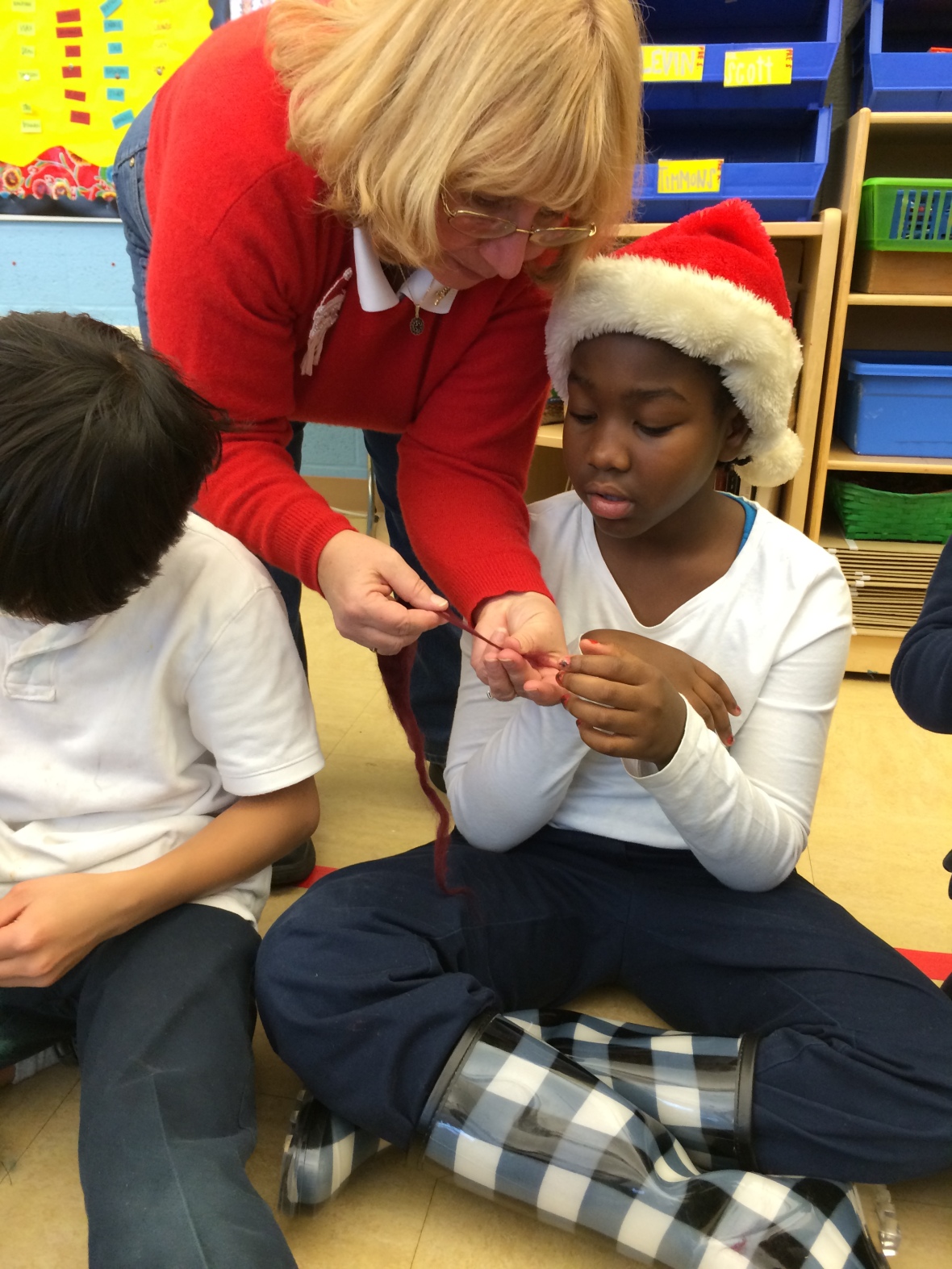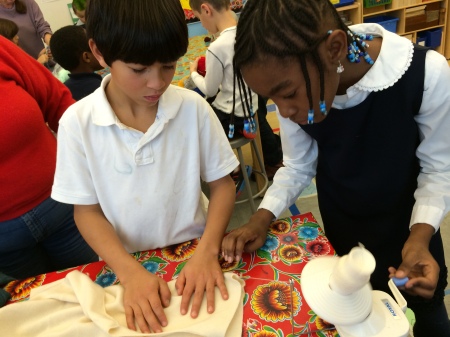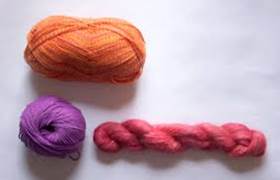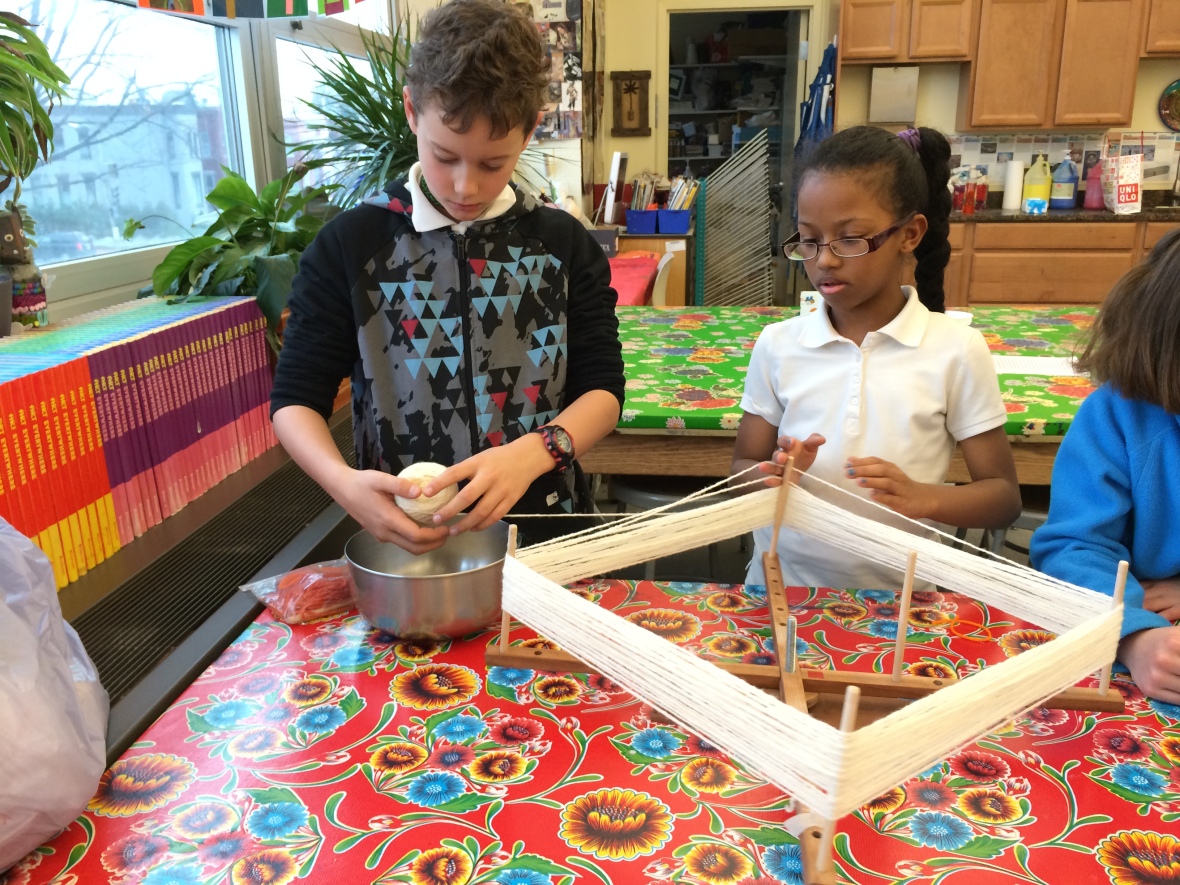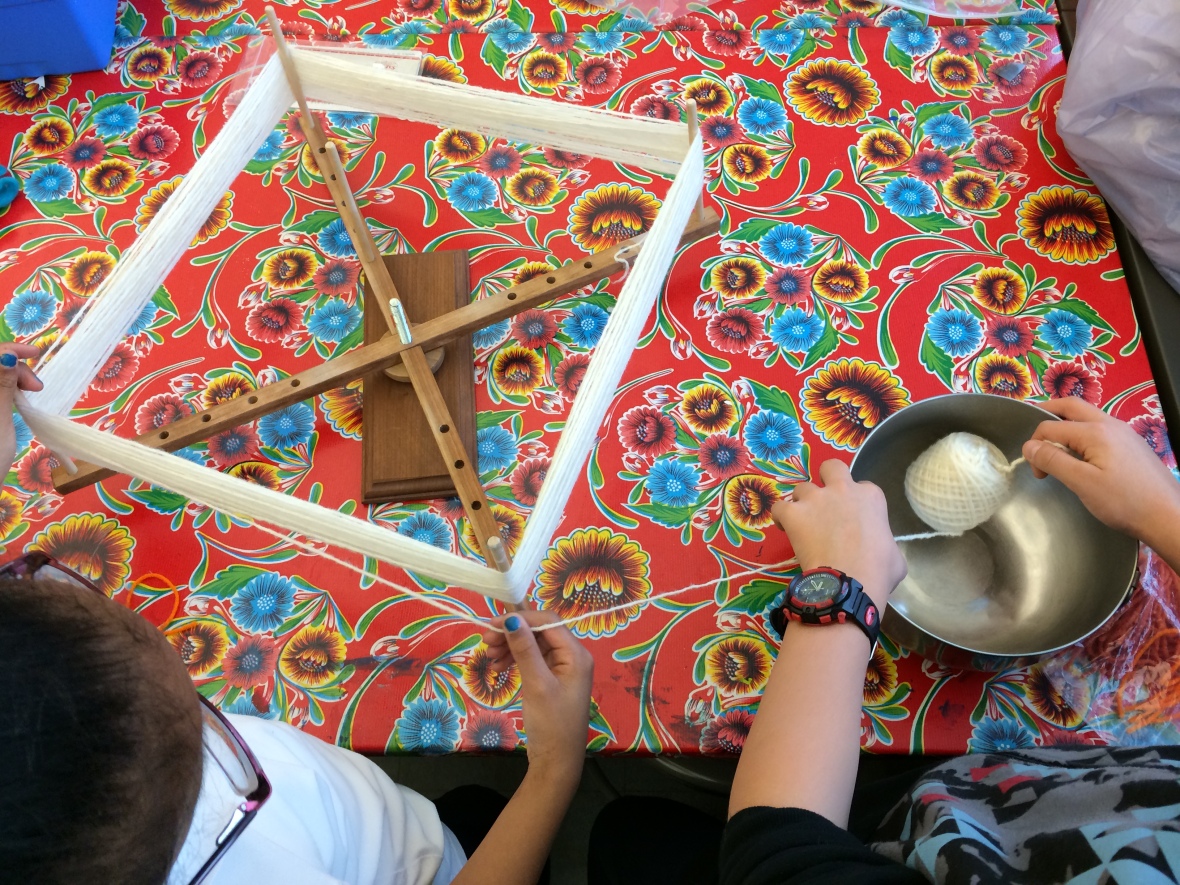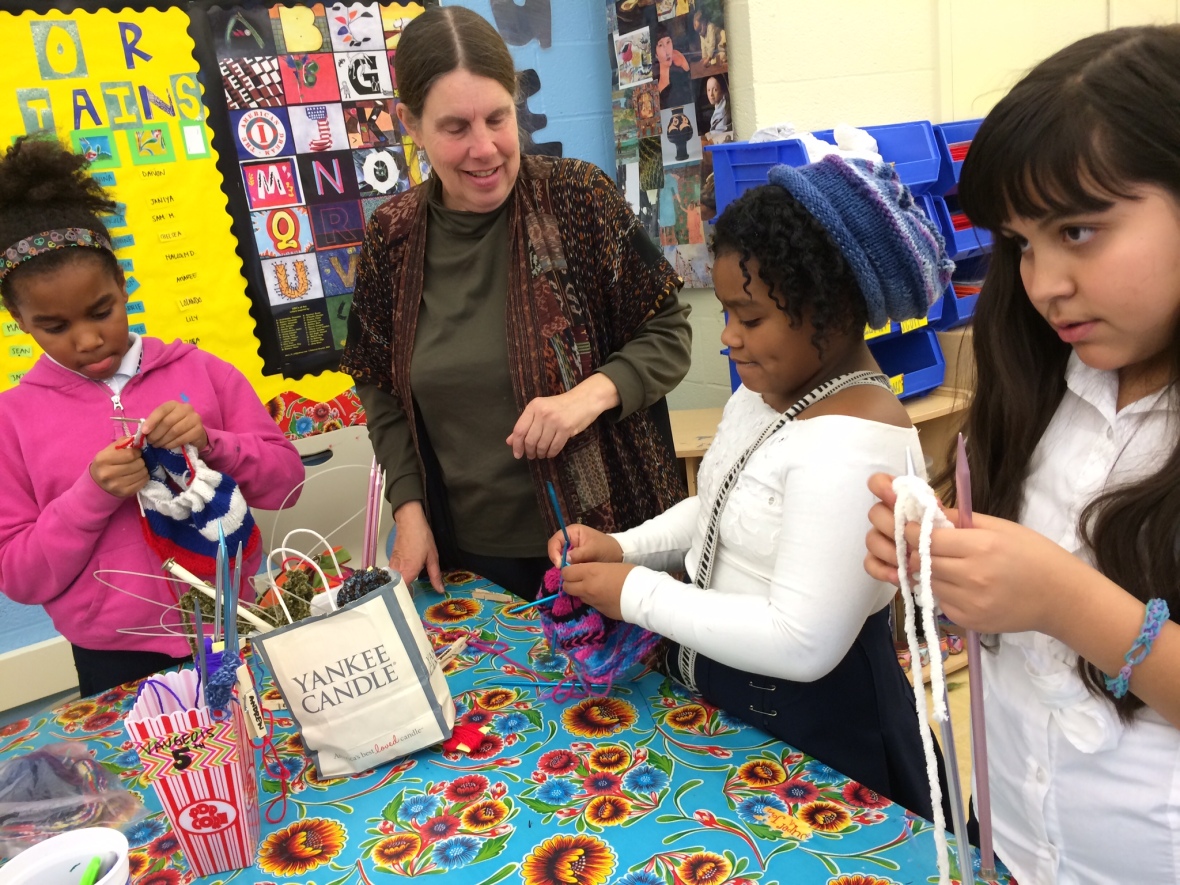I have been putting off this blog post for some time now, all because I just can’t seem to figure out how best to express the work we’ve been doing in the studio since the start of our textile unit four week ago. Perhaps I should begin by stating that I have never felt so loved and supported in my career until the day Elizabeth Nelson (affectionately know as, Aunt Lizzy) and Ann Barsi (grandmother to Maury 1st grader) entered my world and willingly volunteered to be my co-teachers/planners/mentors on this project. This comprehensive unit would never be possible without their knowledge, generosity, passion and enthusiasm.
Elizabeth, Ann, and I set out to create an art unit for 4th and 5th graders that would build on the momentum of Elizabeth’s knitting club and stretch student’s understanding of textiles, craft media, and contemporary art so far that you would believe they were taking a Masters level class at the Corcoran. Our goal was to have our Maury students gain a holistic understanding of the artistic process from start to finish, and gain an appreciation for the effort, dedication, and time it takes to create a textile that Americans so easily take for granted. Our world today is so instantaneous and there are so few examples for children demonstrating the effort required to complete something from start to finish. Handcrafted objects possess a precious, sentimental, historic, and even monetary value that is worthy of closer study.
Our unit began when loads of raw fiber resources were generously donated to the art studio by yet another Maury family (thanks, Anya and fam!). After reading Charlie Needs a Cloak, a Tomie dePaolo classic, students interacted with the sheep’s wool at various stages of its journey from fleece to spun yarn. The dirty wool from the picture above went from being full of burrs and dirt to washed, carded, and hand spun yarn!
 Ann shares the process of sheering, washing, carding, dyeing, spinning, and weaving wool in order for Charlie to get a new cloak!
Ann shares the process of sheering, washing, carding, dyeing, spinning, and weaving wool in order for Charlie to get a new cloak!
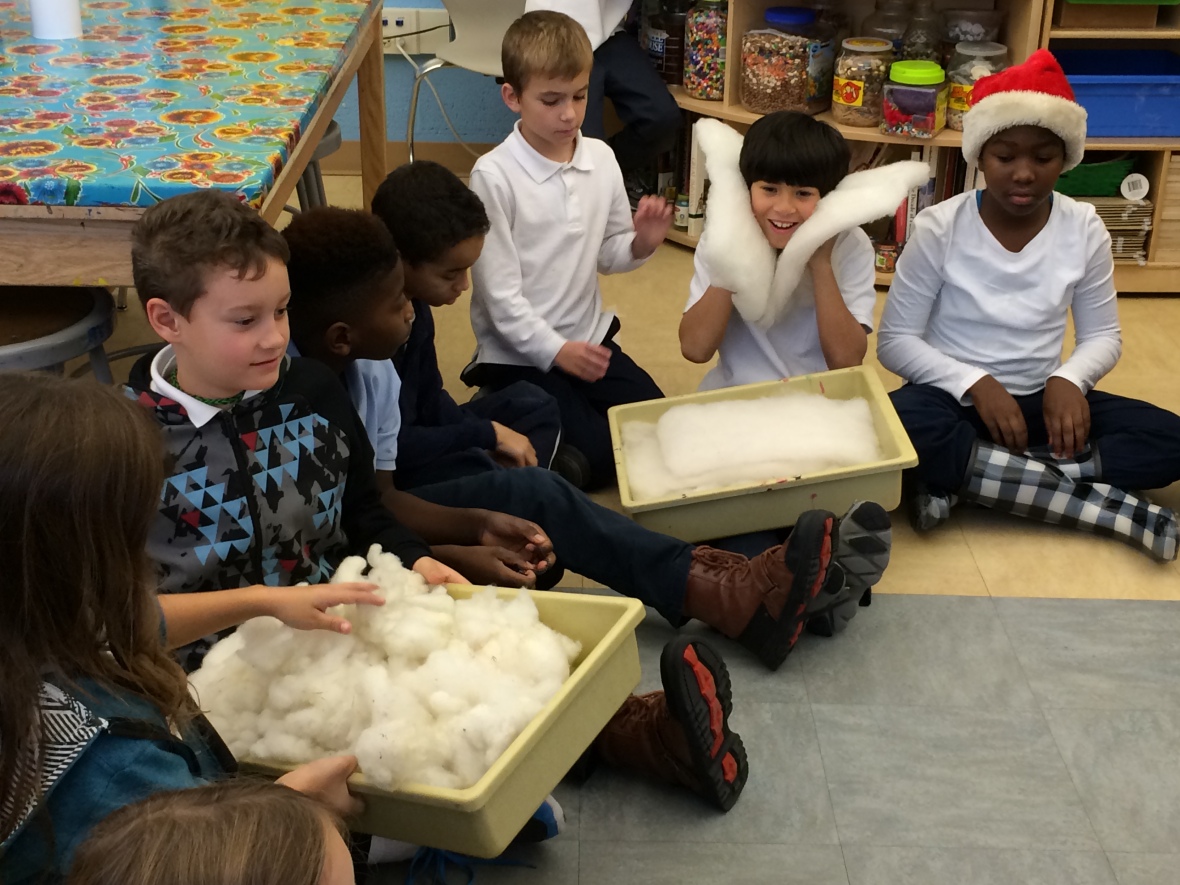 Ms. George’s class gets up close and personal with the wool!
Ms. George’s class gets up close and personal with the wool!
 Some students were less excited than others to interact with the dirty wool of a wild animal
Some students were less excited than others to interact with the dirty wool of a wild animal
 Hand spinning the dyed wool roving to create yarn by elongating the fibers and strengthening them. Much harder than it looks and a great lesson in appreciating the yarn we use to knit with on a daily basis.
Hand spinning the dyed wool roving to create yarn by elongating the fibers and strengthening them. Much harder than it looks and a great lesson in appreciating the yarn we use to knit with on a daily basis.
 Perfecting their technique and demonstrating a whole lot of patience
Perfecting their technique and demonstrating a whole lot of patience
That very same day, students got a chance to learn how to knit for the first time (or perfect their skills), as well as deconstruct sweaters on a yarn winder. Deconstruction is valuable to learn because it reinforces each step of the process and helps kids understand where their textiles come from. Another valuable takeaway is that expensive fibers such as cashmere and alpaca can be purchased for $3.99 in the form of an old thrift shop sweater and then all that precious fiber can be re-purposed for your own knitting needs on the cheap!
 Yarn winder for the fun frogging process (rip-it, rip-it, rip-it!)
Yarn winder for the fun frogging process (rip-it, rip-it, rip-it!)
 Setting up the winder. Yay for student co-teachers!
Setting up the winder. Yay for student co-teachers!
 Working together to make sure the fiber doesn’t tangle
Working together to make sure the fiber doesn’t tangle
Ann taught the kids many new vocabulary words and how to take the newly frogged cakes from the yarn winder, spin it onto the swift to create hanks, and the process of washing the kinky wool to get more manageable yarn for knitting. Students were in charge of each step and for using appropriate vocabulary when speaking about their process.
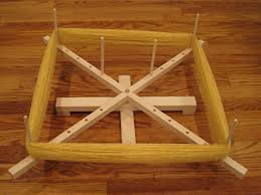 The swift (this thing can really move!)
The swift (this thing can really move!)
 Comparing the difference between unwashed and washed wool
Comparing the difference between unwashed and washed wool
In the past few weeks we have felted wool to create felted soap exfoliates, administered burn tests to see which fibers ignite easiest and which are better suited for pajama and uniform creation. We talked about how soldiers and members of the flight deck crew wear wool for warmth and because wool (an animal fiber) does not catch fire as easily as cotton (a plant fiber). Synthetic fibers like acrylic are even more dangerous to people in high risk jobs because the plastic, chemical infused fibers (man-made) if caught on fire, would melt to the skin and lead to gruesome and excruciating burns.
 After burning stinky and flammable fibers inside, we took our pyrotechnics outside the rest of the week and enjoyed the warm winter weather
After burning stinky and flammable fibers inside, we took our pyrotechnics outside the rest of the week and enjoyed the warm winter weather
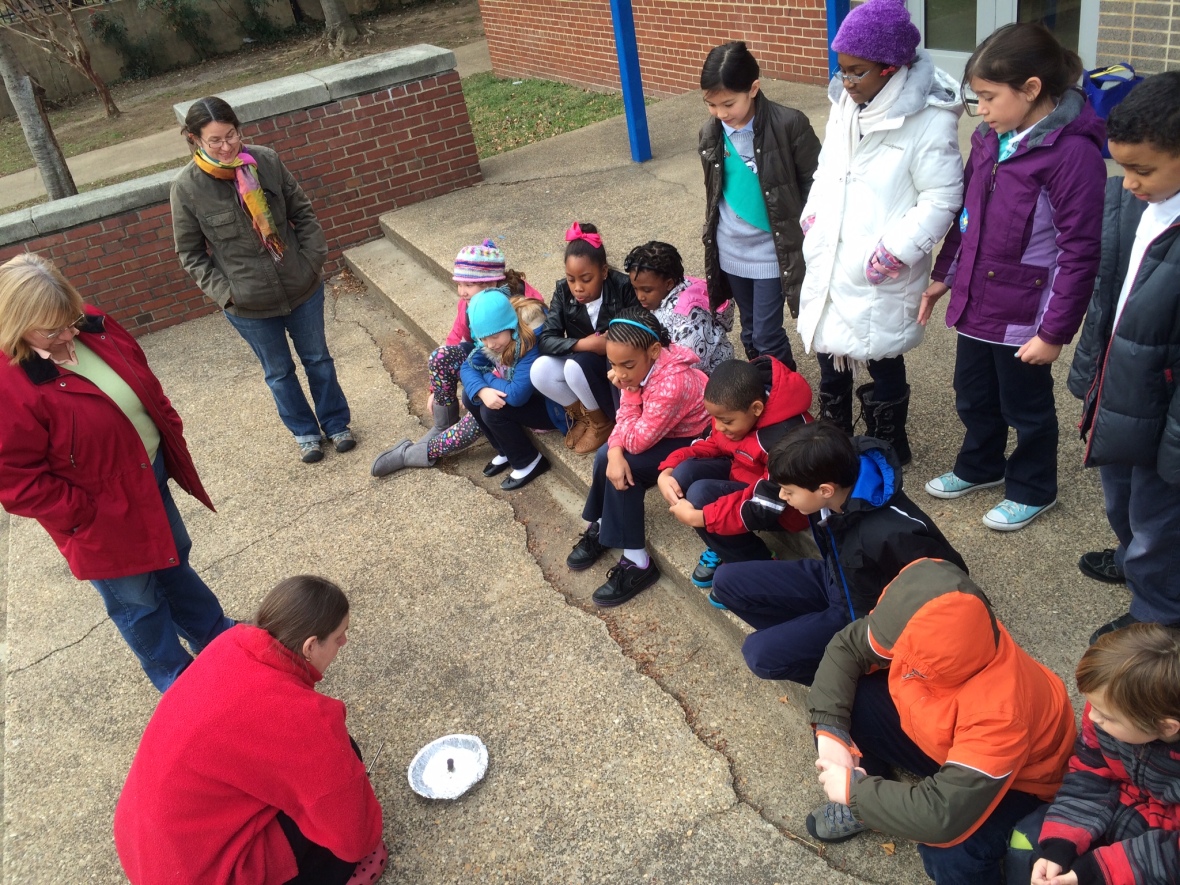 I spy Ms. Frietze! She took a break from her own painting studio to share in the collaborative artist environment we’ve created at Maury
I spy Ms. Frietze! She took a break from her own painting studio to share in the collaborative artist environment we’ve created at Maury
 Cotton smelled nice when burned, like candles (think about the wick of a candle), but synthetic fiber was stinky. Wool fiber barely caught at all.
Cotton smelled nice when burned, like candles (think about the wick of a candle), but synthetic fiber was stinky. Wool fiber barely caught at all.
Here are two videos of Aunt Lizzy explaining the dangers of burning synthetic fibers as well as watching a stinky piece of acrylic burn
One of my favorite lessons to date has been the dyeing process. We used all of the lamb’s wool, merino wool, and cashmere the kids frogged, swifted into hanks, and washed (thanks, Ann!) during the first lesson on the yarn winder. This yarn will later be re-purposed yet again in the creation of our final project (personal superheroes sock dolls inspired by artist Mark Newport).
Lizzy, Ann and I each took charge of a table and let the kids fill vats of water, ring out soaked fiber, and decide which colors to mix to create a series of three dyes. All of our color theory knowledge came into play when making yellow oranges and blue greens. We used Kool-Aide as our pigment–cheap and effective. One student from each table kept notes about saturation and dye concoctions. The wool soaked for over an hour before accepting the dye. We made variegated yarn by dipping segments of our hanks into different dye vats. We even threw a sock into a tub to see whether or not it was a plant or synthetic fiber. The results were varied. The students soon learned that synthetic fibers do not accept dye at all and that the wool dyed most vibrantly, even over plant fiber like cotton. We also learned that some socks are a cotton/synthetic blend and allow for minor saturation.
 Soaking the fiber in the dye vats
Soaking the fiber in the dye vats
 Ringing out excess water carefully, so not to tear the fibers
Ringing out excess water carefully, so not to tear the fibers
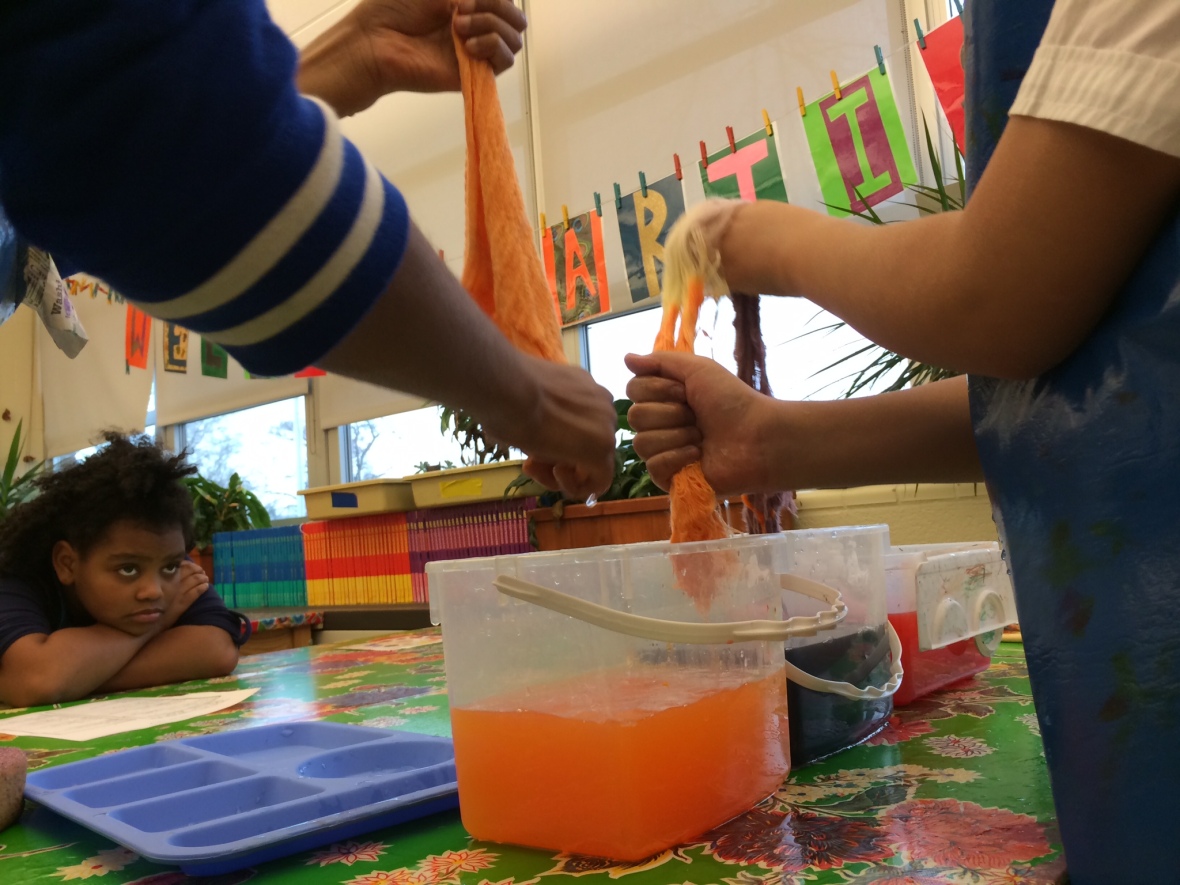 Creating the variegated yarn (look at the focused scribe!)
Creating the variegated yarn (look at the focused scribe!)
 Our hanks hanging out in the kiln room to dry
Our hanks hanging out in the kiln room to dry
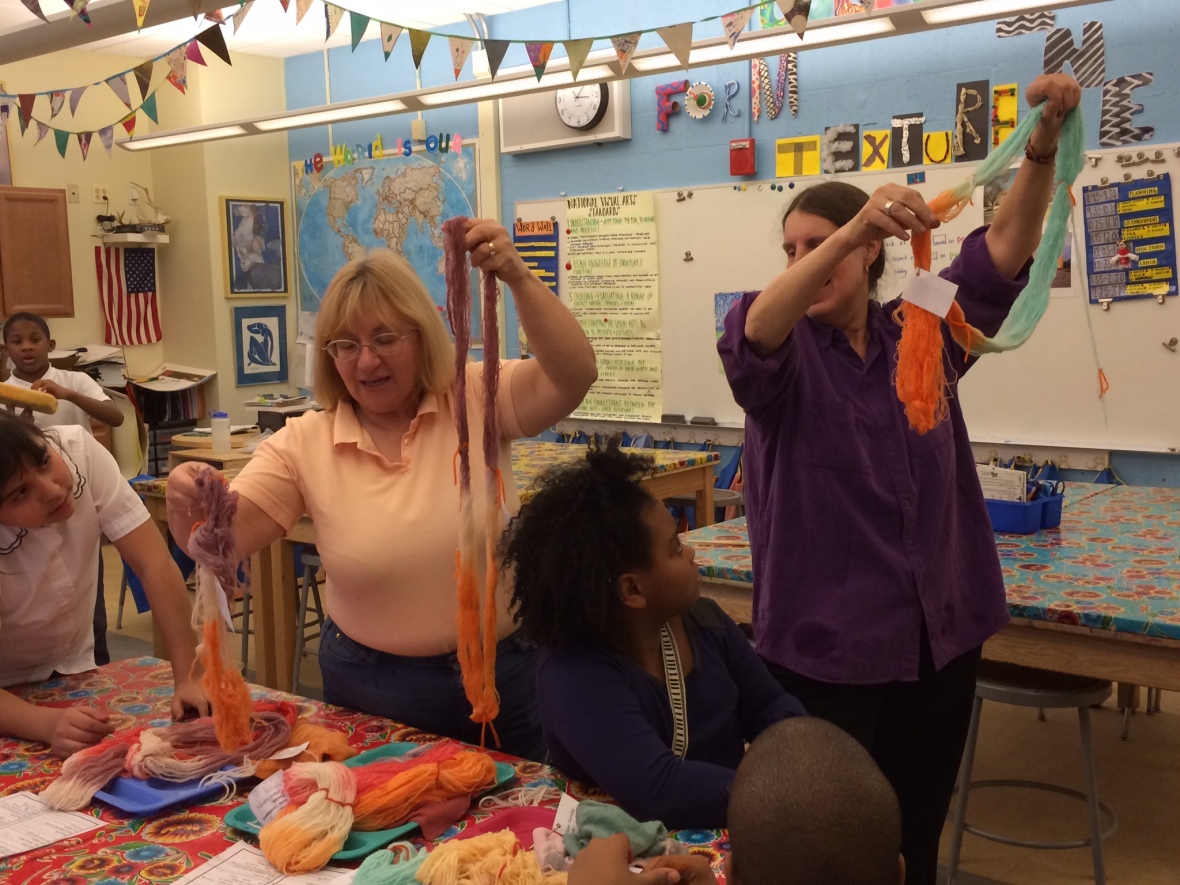 Ann and Elizabeth leading the reflection about which fibers accept dye the best at the end of a busy day in the studio
Ann and Elizabeth leading the reflection about which fibers accept dye the best at the end of a busy day in the studio
Once school resumes (after all these snow days), students will wind their hanks back into cakes for future knitting and begin creating the plan for their textile-super hero dolls. We will be diving into the more conceptual side of this technical unit and asking kids to ponder what it is that makes superheroes “super” and how costume, texture, and materials contribute to our notion of strength and power. We will challenge traditional gender roles in art making and learn more about why Mark Newport chooses to knit life-size costumes in order to transform into his super hero aliases. Stay tuned for more fiber fun in the coming weeks and if you see Ann or Elizabeth, thank them for all they do to make Maury such a unique place.





